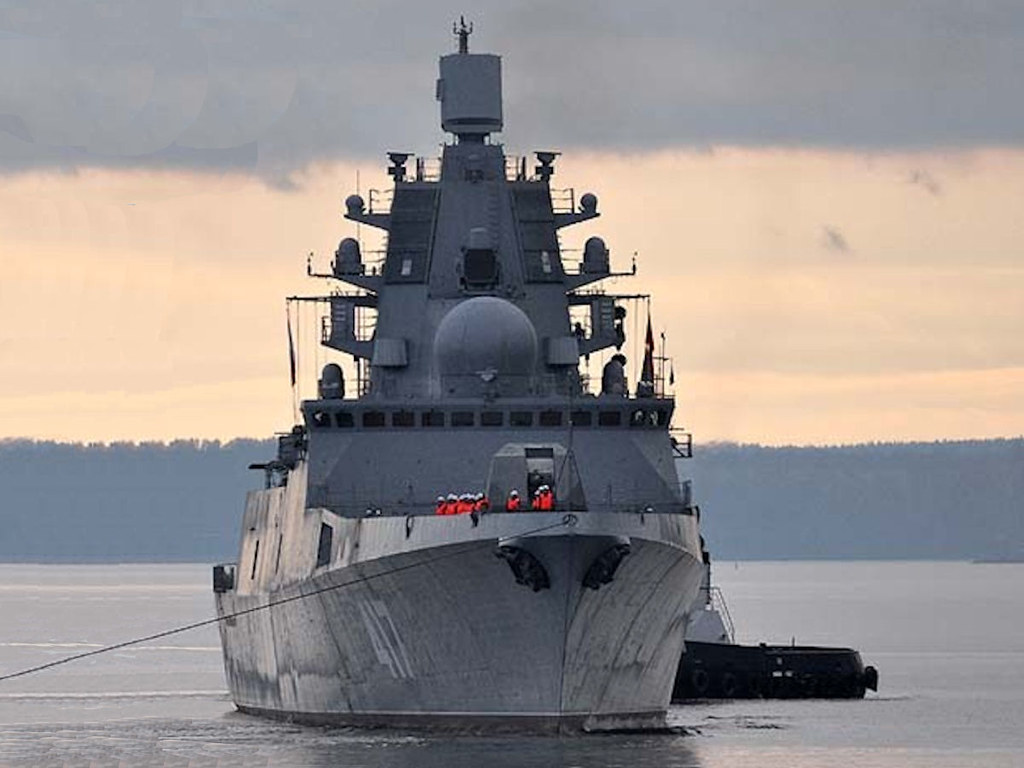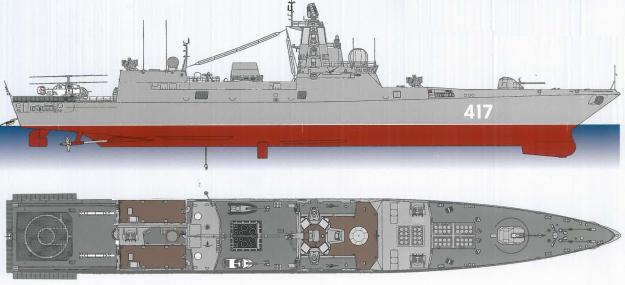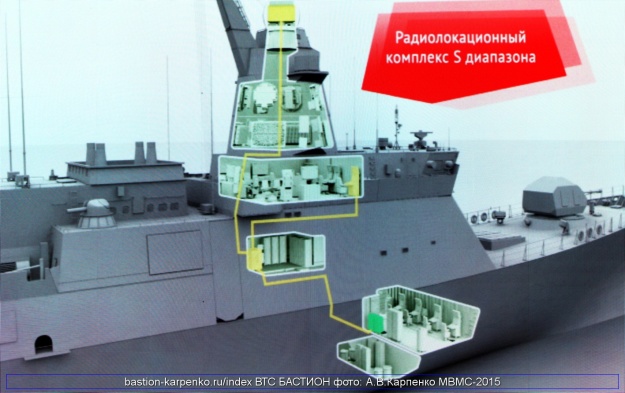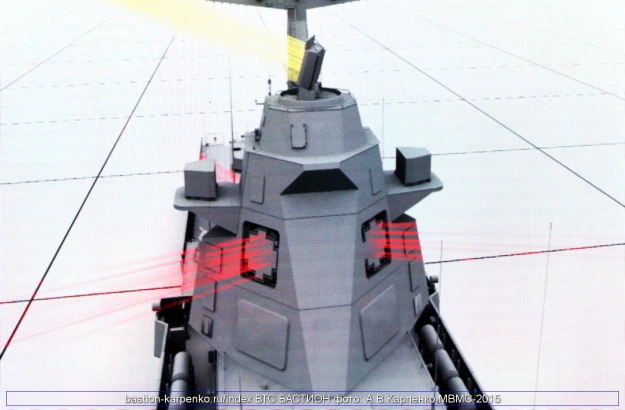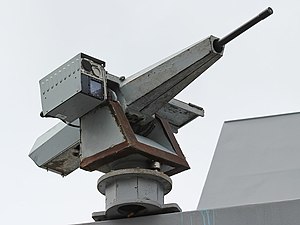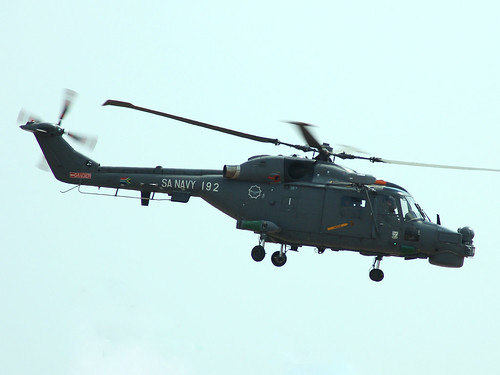CONTINUAÇÃO
Weapons and armaments of the multirole long-range frigates

The Admiral Gorshkov Class vessels are equipped with a new 130mm gun mount, a 30mm close-in weapon system (CIWS) gun and eight SS-NX-26 Yakhont anti-ship cruise missiles. Yakhont missiles can be fired against a group of naval surface vessels and single vessels.
Other weapon systems include a Medvedka-2 ASW (anti-submarine warfare) system and a Hurricane medium-range surface-to-air defence missile system. The vessels can also be fitted with 21in torpedo tubes to carry torpedoes.
tumblr_njosnapfhp1rcoy9ro1_1280
Gorshkov is the only Russian combat ship to be equipped with BrahMos missiles. BrahMos is a supersonic cruise missile developed by the BrahMos Aerospace, a collaboration between Russia and India.
The missile has a range of 180 miles (290km) and is capable of carrying a conventional warhead of up to 660lb.
Ground and sea targets can be successfully hit by the missile while travelling at an altitude as low as ten metres (30ft) and at a speed of Mach 2.8, three times faster than the US-made subsonic Tomahawk cruise missile. The Russian Navy plans to equip the ship with six BrahMos missiles.
Armament:
1 × 130mm Amethyst/Arsenal A-192M naval gun with rate of fire of 45 rds per minute [7]
16 (2 × 8) UKSK VLS cells fitted with P-800 Oniks (SS-N-26) and/or Kalibr missile system (SS-N-27)
32 (4 × 8) Redut VLS cells housing 9M96, 9M96M, 9M96D/9M96DM(M2) family of missiles and/or quad-packed 9M100 short range missiles
2 × Palash CIWS
2 × 4 330mm torpedo tubes for Paket-NK anti-torpedo/anti-submarine torpedoes
2 × 14.5mm MTPU pedestal machine guns
A-192M -130-mm naval gun mount

Features gun mount A-192m: – a new generation of artillery systems, unified, lightweight, modular design; – gun mounts odnoorudiynaya tower, fully automated, consisting of two modules: the firing rotating module attached to the equalized-ring-ship; Module for placement of electrical and hydraulic equipment and electro-optical guidance system equipment is placed in aggregate ship compartment; – the barrel-monoblock with muzzle brake, horizontal wedges, hydraulic rammer, hydropneumatic recoil device and pneumatic recuperator; – cooling liquid barrel produced in between firing pumping water through the bore; – ammunition for automatic feeding is vertical drums, arranged in a rotating AU firing module. Make-up drum is made in between the firing of the semi-automatic system cabling mechanical bark-feeding (CPM) of artpogreba;

– Automation, control and monitoring (Sauk) UE provides synchronization of work feeders shots with the work of artillery machine, control the initial state mechanisms and AC systems before shooting and diagnostics in case of failure during the shooting; – guidance artillery systems, and fire control, select the type of shot carried out remotely, in automatic mode from the radar 5P10 control system or from a remote optoelectronic module (OEM) based on the GOES-140 gyro-stabilized system – used ammunition – unitary ballistic explosive and anti-aircraft missiles (ALS), used in the AK-130 and high-precision artillery shells unconventional kind of firing on shore and surface targets; – AU can be easily adapted to the system of multi-purpose weapons of surface ships with a displacement of 1500 tons or more. The number of personnel during combat service – 3 people. The persistence of the barrel – 2500 shots.

Research Engineering Institute (THEM), belongs to the group “Tehmash”, is developing artillery shells with intelligent, programmable fuses for naval artillery, which will bring the enemy ship down with one shot, he said in July 2015 Head Valeriy Lebedev Institute office. He noted that the use of these shots will significantly increase the effectiveness of firing on marine, coastal and air targets, thus reducing the consumption of ammunition at the goal defeat. “The global trend that we follow – is the creation of intelligent fuses that allow a projectile blasting in optimal time and spatial coordinates, “- said Lebedev. According to him, for example, in contact with such a projectile into the vehicle will first be overcome by the thickness of his body, then carried the projectile blasting with optimal deceleration

CHARACTERISTICS
Complex Developer Design “Amethyst” Office
Developer gun mount KB “Arsenal”
Caliber, mm 130
Number of trunks 1
Type loader unitary, automatic
trunk Type monoblock shutter type horizontal wedge
A-192-5P-10E Artillery System


• The system provides all-weather capability and simultaneous firing of two gun mounts to two targets under corresponding configuration. Gun mount ammunition ready to automatic firing of 22 shells. Gun mount is equipped with shells auto-feed system from ship hold.
• High-noise immunity of the system is achieved by means of using radar control system with automatic time-space adaptation based on digital processing of coherent radar impulses with variable base and electro-optical channel.
• The system operability is supported by general shipborne target acquisition systems and autonomous targets detection mode.
• Improved attack potential in combat against stream of attacking sea skimmers is achieved due to capability of simultaneous tracking of up to 4 targets, firing data generation on two most hazardous targets and swift fire transfer to the successive targets in the stream. The system is capable of high quality meteoballistic preparation of fire, zero hits measurements and automatic faults correction during firing to air and surface targets. The system includes automatic operability control and troubleshooting system, as well as operation process documentation facilities.

 16 (2 × 8) UKSK VLS cells fitted with P-800 Oniks (SS-N-26) and/or Kalibr missile system (SS-N-27)
16 (2 × 8) UKSK VLS cells fitted with P-800 Oniks (SS-N-26) and/or Kalibr missile system (SS-N-27)
This new class of Russian frigates incorporate best weapons and sensors that the Russian industry can produce.
The Admiral Gorshkov class is equipped with a 16-cell Vertical Launch System (VLS) for a mix of Kalibr-NK land attack cruise missiles (range 2 500 km), P-800 Oniks anti-ship missiles (range 300-500 km) and 91RTE2 anti-submarine missiles (missile drops torpedo 50 km away).
2 × 8 UKSK VLS cells just in front of bridge fitted with P-800 Oniks (SS-N-26) and/or Kalibr missile system (SS-N-27) and behind main gun 32 (4 × 8) Redut VLS cells housing 9M96, 9M96M, 9M96D/9M96DM(M2) family of missiles and/or quad-packed 9M100 short range missiles.
 P-800 Oniks (SS-N-26) anti-ship missile
P-800 Oniks (SS-N-26) anti-ship missile Já especificado anteriormente
3M54T (SS-N-27) anti-ship missile

3M54T is deployed on surface ships equipped with VLS launchers and thrust vectoring boosters. The performances are the same as the 3M54.
Its basic length is 8.22 m (27.0 ft.), with a 200 kg (440 lb.) warhead. The range is 440–660 km (270–410 mi). The missile is a sea-skimmer with supersonic terminal speed (Mach 2.9) and a flight altitude of 4.6 metres (15 ft.) at its final stage.
The Kalibr 3M-54 (NATO codename – «Sizzler», SS-N-30A) is a long-range, low-flying cruise missile capable of carrying conventional or nuclear warheads. It has land-attack, anti-ship and anti-submarine variants. The missile has a second stage that performs a supersonic sprint in the terminal approach to the target, reducing the time that target’s defense systems have to react.
The Kalibr is designed to share common parts between the surface and submarine-launched variants but each missile consists of different components, for example, the booster. The missile can be launched from a surface ship with a Vertical Launched System (VLS) and a booster with thrust vectoring capability. The missile launched from a submarine torpedo tube can use a conventional booster instead. The air launched version is held in a container to be dropped after the missile is fired. During its terminal phase, the missile locates its target through a mix of coordinates and onboard image recognition, essentially matching an uploaded image of the target to what the missile sees in front of it. If all goes to plan, the missile’s 1,000-pound payload of high-explosive is then guided straight to the target for a violent impact.
3M14T land attack missile

3M14T is the inertial guidance surface ship-launched land attack variant with VLS launched missile and thrust vectoring booster. The basic length is 8.9 m (29 ft.); its warhead weight and other performance are the same as the 3M14K. 26 3M14T cruise missiles of this variant were fired from four surface ships in the Caspian Sea on 7 October 2015.
Originated From: Russia
Possessed By: Russia
Alternate Name: 3M-54, Kalibr
Class: Sea-launched Land Attack Cruise Missile
Basing: Ship/Submarine-based
Length: 6.2 m
Payload: 450 kg warhead:
Propulsion: Turbojet
Range: 1,500-2,500 km
Status: Operational
In Service: 2015-present
91RE2 anti-submarine torpedo

The 91RE2 is a surface-launched, rocket-assisted, anti-submarine torpedo similar to ASROC: length of 6.5 m, weight is 1300 kg, range is 40 km, warhead is 76 kg, maximum speed is Mach 2.0. Anti-submarine missile 91RE2 is intended to arm surface ships equipped with standardized launchers 3C-14E or 3C-14PE. 91RE2 run at all speeds ship carrier. Booster rocket 91RE2 less powerful than rocket 91RE1, it provides output of ship missiles launcher and climb. In the design point of the second stage separation is carried out, which splashed down on a parachute, and then searches for and guidance on underwater target (see diagram application). The firing range – 40 km. Prelaunch time is 10 seconds.

relaunch missile 91RE2 formation and entering the flight tasks performed universal control system (CS) missile complex 3R-14H. It is an automated system that operates in real time as part of the combat information control system (CICS) ship carrier. The ships 11356 installed CICS “requirement-M”, developed NPF “Meridian”.
anti-submarine missiles and 91re1 91re2CICS “requirement-M” is an open, distributed adaptive computing system. Pairing SU missile system with CICS performed on the digital channel LAN using special devices interface. According to the targeting and commands from CICS “requirement-M” and navigating complex ship carrier SU missile system generates data for firing controls prelaunch preparation and launch missiles of various purposes from the complex, as well as procedural checks of complex systems and missiles. Information on the status of the missile system, ammunition available, its use plans, control commands transmitted in graphical and tabular form on the workstations (AWS) CICS “requirement-M.” It provides centralized management of all weapons systems ship with a view to their optimal use in solving various combat missions, including the management of the ship fighting against the use of submarines and anti-submarine weapons. All appliances in the composition SU missile system (except the remote control missiles) – bespultovye, maintenance-free, in the spray – and waterproof performance. Equipment fire – and explosion-proof, requires no cooling during operation.
 APR-3ME or small-sized homing torpedo
APR-3ME or small-sized homing torpedo

APR-3ME or small-sized homing torpedo MPT-1UME (weight-300 kg, a diameter of 324 mm, length 3000 mm, weight-60kg warhead). APR-3ME and MPT-1UME belong to the third generation anti-submarine weapons, and provide an independent search and detection of underwater targets in silent mode, speedy rapprochement with it and defeat it before executing evasive maneuvers and counter.
– 3M-54E 3M-54E1 3M-14E 91RE1 91RE2
Length [m] 8.22 6.2 6.2 8.0 6.5
Diameter [m] 0.533 0.533 0.533 0.533 0.533
Launch Weight [kg] 2,300 1,780 1,780 2,050 1,300
Maximum Range [km] 220 300 300 50 40
Speed [Mach] Depends on flight mode
Subsonic Mode: Mach 0.6 – 0.8, Supersonic Mode: Mach 2.9 0.6 – 0.8
Terminal Stage Speed for the 3M-54E1 0.6 – 0.8
Terminal Stage Speed for the 3M-14E 2.5
Ballistic Stage Speed for the 91RE1 2.0
Ballistic Stage Speed for the 91RE2
Warhead Weight [kg] 200 400 400 76 76
Control System Inertial + Active Radar Homing Inertial + Active Radar Homing Inertial Inertial Inertial
Flight Path Low-Flying Low-Flying Ballistic Ballistic Ballistic
 MOSCOW, December 19. /TASS/. The deployment of Tsirkon new anti-ship hypersonic cruise missiles on the Russian Navy’s corvettes and frigates is envisaged by Russia’s state armament plan for 2018-2027, a source in the country’s defense industry told TASS on Tuesday.
MOSCOW, December 19. /TASS/. The deployment of Tsirkon new anti-ship hypersonic cruise missiles on the Russian Navy’s corvettes and frigates is envisaged by Russia’s state armament plan for 2018-2027, a source in the country’s defense industry told TASS on Tuesday.
“The naval component of the new state armament plan prioritizes building Project 20385 and 20386 corvettes and Project 23350 and 23350M frigates with precision weapons that include Kalibr-NK cruise missiles and Tsirkon hypersonic missiles,” the source said.
TASS does not yet have an official confirmation of this information.
32 (4 × 8) Redut VLS cells housing 9M96, 9M96M, 9M96D/9M96DM(M2) family of missiles and/or quad-packed 9M100 short range missiles
Redut VLS for 16 9M96E

Combat power of the modernized craft greatly enhanced by introducing into the arms of a new universal missile complex “Caliber-NK” (instead of anti-ship complex “Uran”) with a uniform 8-cell launcher for several types of missiles – anti-shooting and coastal targets. Anti-aircraft weaponry corvette enhanced anti-aircraft missile system, 9M96 missiles (supplied from 16 missiles).
9M96 anti-aircraft missile
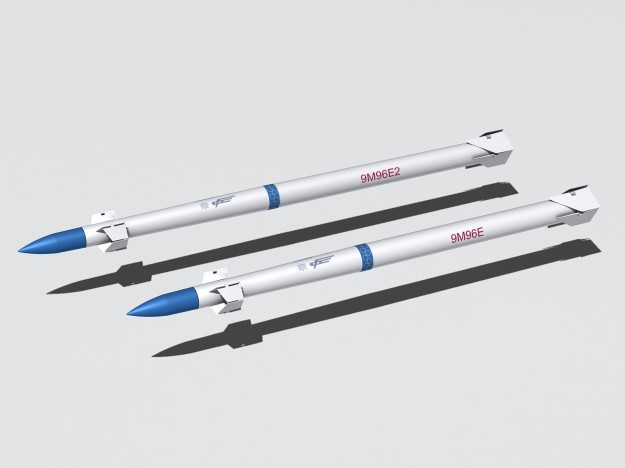
he S-400 Triumph also launches 9M96E and 9M96E2 medium range ground-to-air missiles. Designed for direct impact, the missiles can strike fast moving targets such as fighter aircraft with a high hit probability. The maximum range of the 9M96 missile is 120km.
9M100 short range missiles
The 9M100 is a short-range surface-to-air missile (SAM) being developed by the Fakel Design Bureau, part of Almaz-Antey concern, for new air defenses that should be in place within Russia by 2015. It is targeted at countering the latest generation of fighter aircraft, helicopters, cruise missiles, guided bombs, supersonic missiles and unmanned aerial vehicles (UAVs) which pose a grave threat to ground forces and key facilities. The highly maneuverable 9M100 missile is being designed for launch by means of a vertical launching system (VLS). As of early 2010 the 9M100 missile system is associated with Vityaz medium-range air defense system and might be the primary weapon for the Morfei short-range air defense system.
The 9M100 guidance system combines an inertial navigation system (INS) with an infrared seeker along with a contact and proximity fuze which ignites the warhead. Such a guidance system means that the 9M100 missile is a fire-and-forget weapon capable of engaging multiple targets simultaneously. The solid propellant rocket motor features thrust vectoring control providing outstanding maneuverability.
Dimensions
Diameter: 125 millimeter (4.92 inch)
Length: 2.50 meter (98 inch)
Performance
Max Range: 10 kilometer (5.40 nautical mile)
 2 × Palash CIWS
2 × Palash CIWS Já especificado aqui.

 2 × 4 330mm torpedo tubes for Paket-NK anti-torpedo/anti-submarine torpedoes
2 × 4 330mm torpedo tubes for Paket-NK anti-torpedo/anti-submarine torpedoes

The Paket-E/NK small-sized anti-submarine system with anti-torpedo is designed:
– to engage (destroy) submarines in ship’s close-in zone (when carrying out submarine warfare tasks)
– to destroy torpedoes, attacking the ship (when carrying out anti-torpedo defence tasks)
The complete set of the Paket-E/NK comprises:
– Paket-E control system
– rotating or fixed launching units
– Paket-AE specialized target designation sonar
– combat modules mounted on the launchin unit

Depending on missions assigned to the surface ship, its launching units can house combat modules armed with different combinations of small-sized heat-seeking torpedoes and/or anti-torpedoes, both in nomenclature and in quantity.
The small-sized heat-seeking torpedo is designed to engage enemy submarines, and the anti-torpedo is designed to intercept and destroy attacking torpedoes. Both are housed in unified transport-launch containers.

Characteristic basic as:
Torpedo caliber, mm: 324
Effective anti-submarine defence zone, m: up to 10000
Effective anti-torpedo defence zone, m: 100-800
The Paket-E/NK system can operate independently or be integrated into ship’s antisubmarine/anti-torpedo defence system, solving a number of tasks in fully automatic or automated modes, such as:
– generation of target designation data for small-sized heat-seeking torpedoes, based on data, provided by ship’s sonar systems and posts
– detection and classification of attacking torpedoes, determination of their movement parameters, and generation of target designation data for anti-torpedoes
– pre-launch preparation of combat modules, generation and transfer of firing data to them, launching of anti-torpedoes and/or small-sized heat-seeking torpedoes
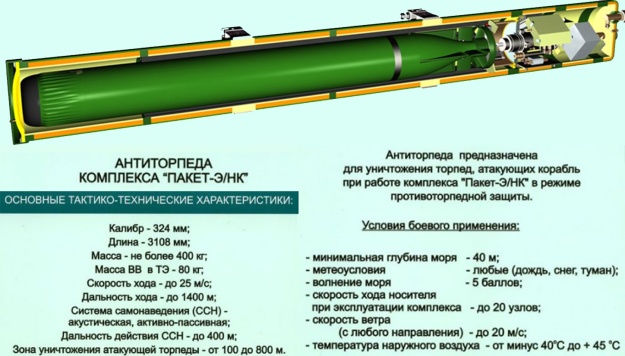
– launching units control
The Paket-E/NK system is a radically new weapon system, allowing surface ships to solve ASW/anti-torpedo defence tasks with high effectiveness, and to increase substantially their survivability.
The delivery set of the Paket-E/NK small-sized antisubmarine/anti-torpedo system is customer-defined.
An automated testing and trouble-shooting system can be delivered for combat modules operational support. Source ktrv.ru
GENERAL DATA:
Type: Torpedo Weight: 235 kg
Length: 2.6 m Span: 0.324 m
Diameter: 0.324 Generation: None
Properties: Search Pattern, Bearing-Only Launch (BOL)
Targets: Submarine, Torpedo
SENSORS / EW:
Torpedo Seeker – (Paket-NK, Small-Caliber, 50kts) Hull Sonar, Active/Passive
Torpedo Seeker, Active/Passive Shallow Water
Max Range: 1.9 km
WEAPONS:
Paket-NK [MTT ASW] – (Russia) Torpedo
Subsurface Max: 7.4 km.
2 × 14.5mm MTPU pedestal machine guns
 Propulsion and power of the Admiral Gorshkov Class vessels
Propulsion and power of the Admiral Gorshkov Class vessels

The frigates are equipped with combined gas turbine and gas turbine (COGAG) propulsion systems. The two cruise gas turbines and two boost gas turbines will be connected through two shafts.DA91 Gas Turbine (First 2 Frigates)
Gas Turbine (First 2 Frigates)

Gas turbine engine UGT 15000+
Three-shaft gas turbine
Compressors: axial 9-stage LPC, 10-stage HPC
Combustion chamber is a can-annular 16-liner counterflow chamber
Compressor turbines are axial single-stage engines
Power turbine is an axial 4-stage engine
The turbine start up is fulfilled by means of the rotor spinning with two AC electric starters of 30kW continuous power
Saturn M90FR gas turbine engine

Saturn M90FR gas turbine engine with a maximum power of 27,500 hp, the M55R power plant includes the 5,200-hp 10D49 diesel engine from the Kolomna Machinebuilding Plant and the RO55R reduction gearbox
Parameters Values
Power on the nominal mode (in the conditions of the ship) Number Ne., h.p./kw 27 500/20 220
Specific fuel consumption on the nominal mode Xie of number, kg / l.s.ch. (kg/kWh) 0,170 (0,230)
Power on the mode of 80% of rated power (in the conditions of the ship) Ne of 80%., h.p./kw 22 000/16 200
Specific fuel consumption on the mode of 80% of rated power Xie 80%ny., kg / l.s.ch. (kg/kWh) 0,178 (0,242)
Air consumption on an entrance to the compressor on the nominal mode Ge, kg/s 72
10D49 diesel engine
 M55R Propulsion Plant
M55R Propulsion Plant


The COGAG propulsion is more efficient than combined diesel and gas (CODAG) and combined diesel or gas (CODOG) propulsion systems. The COGAG system delivers more economical transit at cruise speeds. The propulsion system provides a maximum speed of 30kt.
General characteristics – Project 22350
Displacement (tons):
Standard: 4500
Full load: 5400
Dimensions (m):
Length: 135
Beam: 16
Draft: 4,5
Speed (knots): 29
Range: 4000 nmi
Autonomy (days): 30
Propulsion: 2×32700 hp M55R diesel-and-gas-turbines engines (27500 hp M90FR gas turbine, 5200 hp 10D49 diesel), 2 fixed pitch propellers, 4×1000 kW ADG-1000NK diesel-generators
Armament: 1 Ka-27 helicopter
2×8 3S14-22350 VLS (3K14 «Kalibr-NK» guided missile complex, 3K55 «Onyx» anti-ship missile complex (P-160 anti-ship missiles (3M55)) – 16 missiles)
4×8 3S973K96 «Redut» SAM system VLS (32 9M96 missiles) – «Poliment» fire control system
1×1 130 mm A-192M «Armat» – 5P-10 «Puma» fire control system
2 3R99 «Palash» modules – 2x(2×6 30 mm)
2×1 14,5 mm MTPU
2×4 330 mm SM-588 torpedo tubes – «Paket-A» anti-submarine system (MTT torpedoes, M-15 anti-torpedoes)
Electronics: 5P-20K «Monument» radar complex, 5P-27 «Furke-4» air/surface search radar, MR-231-2 navigation radar, TK-28 ESM radar system, «Grach» visual optical jammer station, «Zarya-3.3» sonar complex, 3.3», «Minotavr-ISPN»sonar, «Sigma-22350» combat information control system, «Tsentavr-NM-1» satellite communication system, «Chardsh-22350» navigation complex
«Prosvet-M» decoy RL system (2? KT-308 launchers, 8 KT-216 launchers)


